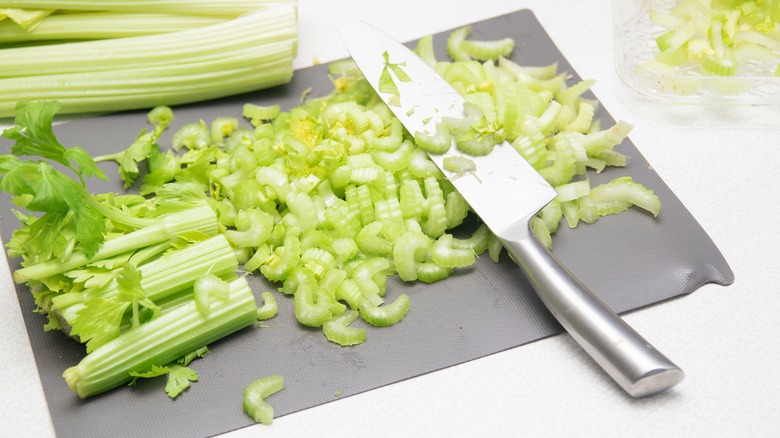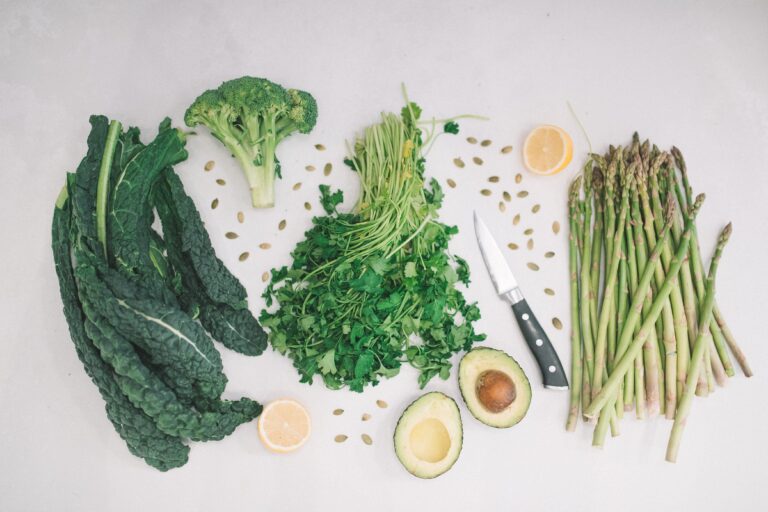The Unsung Stalk: Why Celery Deserves a Spot on Your Plate Every Day
In the grand symphony of the culinary world, celery often plays the quiet, unassuming bass note. It’s the crisp backbone of a mirepoix, the humble dipper for peanut butter, the watery crunch in a chicken salad. Rarely does it command the spotlight, rarely is it celebrated with the fanfare reserved for its more flamboyant vegetable cousins like kale or broccoli. Yet, beneath its unassuming green exterior and refreshing snap lies a nutritional powerhouse, a botanical marvel whose consistent daily inclusion can orchestrate a profound transformation in one’s health. To dismiss celery as mere "diet food" or "just water" is to overlook a saga of ancient wisdom, sophisticated biochemistry, and profound daily benefits that are ripe for rediscovery. This is the story of why celery isn’t just a good choice, but an essential, daily companion on your journey to optimal well-being.
A Whisper from the Past: Celery’s Ancient Lineage
Our story begins not in modern kitchens, but in the marshlands of the Mediterranean, where wild celery, Apium graveolens, first sprouted. For millennia, long before it found its way onto charcuterie boards, celery was revered not for its culinary charm, but for its medicinal might. Ancient Egyptians used its leaves in funeral wreaths, symbolizing rebirth. The Greeks, too, crowned their athletes with celery leaves and employed it in traditional medicine, believing in its diuretic and anti-inflammatory properties. Hippocrates, the father of medicine, prescribed celery for nervous conditions, and it was a staple in Ayurvedic and Chinese medicine for centuries, used to treat everything from hypertension to liver ailments.
The journey from a bitter, wild herb to the crisp, cultivated stalk we know today was a gradual evolution, a testament to human ingenuity and selective breeding. By the 17th century, Italian gardeners had refined it into a more palatable form, and by the 18th century, it had become a celebrated culinary vegetable across Europe. This rich heritage isn’t just historical trivia; it’s a foundational narrative that underscores celery’s deep-rooted efficacy, an efficacy that modern science is now painstakingly confirming. The wisdom of the ancients, it turns out, often rings true.
Deconstructing the Green Gold: A Symphony of Nutrients and Phytonutrients
To truly appreciate celery’s daily impact, one must look beyond its watery appearance and delve into its intricate nutritional profile. While it’s undeniably high in water (over 95%), this hydration vehicle carries a remarkable cargo of vitamins, minerals, and, most importantly, an extraordinary array of bioactive compounds known as phytonutrients.
The Macronutrient Myth: Let’s first address the common misconception: celery is not "negative calorie." While incredibly low in calories (around 16 per cup), digesting it does require energy. However, its low caloric density makes it an unparalleled ally in weight management, offering satiety without the energy burden. Its minimal fat and protein content mean it complements, rather than dominates, a balanced diet.
Micronutrient Marvels:
- Vitamin K: This often-overlooked vitamin is abundant in celery, crucial for blood clotting and, significantly, for bone health. It activates proteins like osteocalcin, which helps bind calcium to the bone matrix, playing a vital role in maintaining bone density and preventing osteoporosis.
- Vitamin C: A powerful antioxidant, Vitamin C supports immune function, aids in collagen synthesis for healthy skin and connective tissues, and helps protect cells from oxidative damage.
- Folate: Essential for cell division, DNA synthesis, and repair, folate is critical for overall cellular health and particularly important during periods of rapid growth and development.
- Potassium: A key electrolyte, potassium is fundamental for maintaining fluid balance, nerve signals, and muscle contractions, most notably impacting blood pressure regulation.
- Manganese: This trace mineral is vital for bone formation, blood clotting, and a powerful antioxidant enzyme called superoxide dismutase (SOD), which combats free radicals.
- Other Minerals: Celery also provides smaller, yet significant, amounts of calcium, magnesium, and phosphorus, all contributing to various bodily functions.
The Phytonutrient Powerhouse: The True Stars of the Stalk:
This is where celery truly shines, where its daily consumption transcends simple nutrition and enters the realm of therapeutic benefit. These plant compounds work synergistically, offering a complex interplay of protective effects.
- Apigenin: Perhaps one of celery’s most extensively studied compounds, apigenin is a flavonoid with potent anti-inflammatory, antioxidant, and even potential anti-cancer properties. It has been shown to modulate immune responses, inhibit inflammatory enzymes, and induce apoptosis (programmed cell death) in various cancer cell lines.
- Luteolin: Another powerful flavonoid, luteolin shares many of apigenin’s benefits, particularly its strong antioxidant and anti-inflammatory actions. It’s also gaining attention for its neuroprotective effects, potentially safeguarding brain health.
- Phthalides (e.g., 3-n-butylphthalide, NBP): These unique compounds are largely responsible for celery’s distinctive aroma and, more importantly, its well-documented blood pressure-lowering effects. NBP, in particular, has been studied for its ability to relax the smooth muscles around blood vessels, thereby improving blood flow and reducing pressure. It’s also being investigated for its neuroprotective potential.
- Coumarins: These natural compounds contribute to celery’s subtle bitterness and possess a range of biological activities, including anticoagulant (blood-thinning) and anti-cancer properties.
- Polysaccharides: The complex carbohydrates in celery contribute to its fiber content but also possess immune-modulating and anti-inflammatory effects, particularly beneficial for gut health.
- Flavonoids and Phenolic Acids: Beyond apigenin and luteolin, celery contains a broader spectrum of these compounds, all contributing to its overall antioxidant capacity, protecting cells from damage caused by free radicals.
The combination of these elements makes celery far more than just a crunchy, hydrating snack. It’s a sophisticated delivery system for compounds that actively support and optimize numerous physiological processes, making its daily inclusion a strategic investment in long-term health.
The Daily Dividend: Why "Every Day" Unlocks Profound Benefits
The cumulative effect of these nutrients and phytonutrients, when consumed consistently, is where the magic of daily celery truly unfolds. It’s not about a one-time cleanse or an occasional boost; it’s about establishing a steady stream of support for your body’s intricate systems.
1. Hydration and Electrolyte Balance: The Foundation of Life
Given its over 95% water content, daily celery consumption is an effortless way to contribute to your hydration goals. But it’s not just water; it’s electrolyte-rich water, providing potassium, sodium (in small, natural amounts), and other minerals that are vital for maintaining fluid balance, nerve function, and muscle contraction. Adequate daily hydration is fundamental for every bodily process, from nutrient transport to temperature regulation, and celery offers a delicious, low-calorie way to achieve it.
2. Digestive Harmony: A Gut Feeling of Goodness
Celery is a champion for digestive health. Its blend of soluble and insoluble fiber acts as a natural broom for the digestive tract. Insoluble fiber adds bulk to stool, promoting regular bowel movements and preventing constipation. Soluble fiber, on the other hand, forms a gel-like substance, which can help regulate blood sugar and cholesterol levels. Furthermore, the polysaccharides in celery act as prebiotics, feeding beneficial gut bacteria and fostering a healthy microbiome, which is increasingly recognized as central to overall health, immunity, and even mood. A happy gut, indeed, makes for a happy life.
3. Cardiovascular Fortification: A Stronger Heartbeat
Perhaps one of celery’s most celebrated benefits is its impact on cardiovascular health. The phthalides, particularly 3-n-butylphthalide (NBP), are potent vasodilators, meaning they help relax the smooth muscles lining blood vessels, allowing them to widen. This reduces resistance to blood flow, leading to a natural lowering of blood pressure. The high potassium content also counteracts the effects of sodium, further aiding in blood pressure regulation. Moreover, celery’s fiber helps to bind with cholesterol in the digestive tract, preventing its absorption and aiding in its excretion, thereby contributing to healthier cholesterol levels. Its antioxidant and anti-inflammatory compounds also protect the delicate lining of blood vessels from damage, reducing the risk of atherosclerosis.
4. Anti-inflammatory Prowess: Quenching the Inner Fire
Chronic inflammation is now recognized as a root cause of many modern diseases, from arthritis and autoimmune conditions to heart disease and cancer. Celery, with its impressive arsenal of apigenin, luteolin, and other flavonoids, acts as a powerful anti-inflammatory agent. These compounds work by inhibiting key inflammatory enzymes and pathways in the body, effectively "turning down the volume" on inflammatory responses. For individuals grappling with inflammatory conditions or simply seeking to mitigate the cumulative damage of everyday inflammation, daily celery offers a gentle yet persistent therapeutic intervention.
5. Antioxidant Arsenal: Shielding Your Cells
Our bodies are constantly under assault from free radicals, unstable molecules that cause oxidative stress and cellular damage, accelerating aging and disease. Celery’s rich supply of antioxidants – vitamins C, manganese, apigenin, luteolin, and other phenolic compounds – acts as a formidable defense. These antioxidants neutralize free radicals, protecting DNA, proteins, and lipids from harm. Consistent daily intake ensures a steady supply of these cellular bodyguards, bolstering your body’s natural resilience against environmental stressors and metabolic byproducts.
6. Cognitive Clarity and Brain Health: Fueling the Mind
Emerging research highlights the neuroprotective potential of celery’s compounds. Luteolin, in particular, has been shown to reduce neuroinflammation and protect brain cells from oxidative damage, both of which are implicated in age-related cognitive decline and neurodegenerative diseases like Alzheimer’s and Parkinson’s. By improving blood flow to the brain (thanks to phthalides) and reducing inflammation, daily celery consumption could contribute to sharper cognitive function, improved memory, and a reduced risk of neurological disorders over the long term.
7. Blood Sugar Regulation: A Sweet Spot for Stability
With its low glycemic index and high fiber content, celery is an excellent food for managing blood sugar levels. The fiber slows down the absorption of glucose into the bloodstream, preventing rapid spikes and crashes. This makes it a valuable addition for individuals with diabetes, pre-diabetes, or anyone looking to maintain stable energy levels and reduce cravings throughout the day.
8. Weight Management Ally: Satiety Without the Guilt
For those navigating the complexities of weight management, celery is a non-negotiable ally. Its extremely low caloric density combined with its high water and fiber content means you can eat a significant volume for very few calories, promoting a feeling of fullness and satisfaction. This satiety helps curb overeating and makes it an ideal, guilt-free snack or a bulking agent in meals without adding caloric burden.
9. Bone Health Booster: More Than Just Calcium
While calcium often gets all the credit for bone health, Vitamin K is equally crucial. As mentioned, celery is an excellent source of Vitamin K, which plays a vital role in bone mineralization by activating osteocalcin. Paired with its modest calcium and magnesium content, daily celery contributes to building and maintaining strong, resilient bones, reducing the risk of fractures and osteoporosis later in life.
10. Skin Radiance and Detoxification: A Glow from Within
The hydrating properties of celery, combined with its wealth of antioxidants, contribute to healthier, more radiant skin. Proper hydration keeps skin supple and elastic, while antioxidants protect against damage from UV radiation and pollutants, which can lead to premature aging. Its mild diuretic properties also assist the body in flushing out excess fluids and toxins, supporting the kidneys and liver in their natural detoxification processes, further contributing to a clear, vibrant complexion.
11. Potential Anti-Cancer Properties: A Protective Shield
While no single food is a magic bullet against cancer, the compounds in celery offer compelling protective mechanisms. Apigenin and luteolin, for instance, have been shown in laboratory studies to inhibit the proliferation of cancer cells, induce apoptosis (programmed cell death), and even block angiogenesis (the formation of new blood vessels that feed tumors). Coumarins also demonstrate anti-cancer activity. While human research is ongoing, incorporating celery daily as part of a varied, plant-rich diet provides a steady stream of these protective compounds, contributing to an overall anti-cancer lifestyle.
Beyond the Stalk: Practical Integration into Your Daily Life
The beauty of celery lies not just in its benefits, but in its incredible versatility. Integrating it daily doesn’t have to be a chore; it can be a delicious adventure.
- The Quintessential Snack: Simple, raw celery sticks are perhaps the easiest way to enjoy it. Pair with hummus, almond butter, or a low-fat dip for added flavor and protein.
- The Juicing Phenomenon: The "celery juice craze" introduced many to its potent benefits. While consuming whole celery provides the added fiber, celery juice offers a concentrated dose of its vitamins, minerals, and phytonutrients, particularly beneficial on an empty stomach. Just be mindful that juicing removes fiber.
- Salad Superstar: Chop celery into any salad for an irresistible crunch and refreshing flavor. Its subtle taste complements a vast array of ingredients.
- Soup and Stew Foundation: Celery is a cornerstone of mirepoix (celery, carrots, onions), the aromatic base for countless soups, stews, and sauces. It imparts depth and a savory note.
- Stir-fries and Cooked Dishes: Don’t shy away from cooking celery. While some heat-sensitive nutrients may diminish slightly, many beneficial compounds remain intact, and it adds a wonderful texture and flavor to stir-fries, casseroles, and roasted vegetable medleys.
- Smoothie Enhancer: Blend celery into your morning smoothies. Its mild flavor won’t overpower other ingredients, and it’s an excellent way to boost hydration and nutrient intake.
- Fermented Fun: Explore fermented celery, like lacto-fermented celery sticks, which not only preserve its nutrients but also introduce beneficial probiotics to your gut.
- The Mighty Leaves: Don’t discard the leaves! They are even more nutrient-dense than the stalks, packed with flavor. Use them as a garnish, chop them into salads, or blend into pesto.
- Celery Seeds: Ground celery seeds are a powerful spice, often used in traditional medicine for their anti-inflammatory and diuretic properties.
Dispelling the Myths: More Than "Just Water"
Let’s address the persistent myths surrounding celery. The notion of "negative calories" is largely a fallacy, but its extremely low caloric density makes it a smart choice for weight management. And while it is predominantly water, to call it "just water" is to ignore the symphony of nutrients and bioactive compounds it delivers. It’s a high-performance delivery system, carrying essential elements that actively contribute to health.
Some may find its taste challenging. For those, pairing it with stronger flavors, incorporating it into cooked dishes, or blending it into smoothies can mask its raw intensity while still delivering its benefits. Organic celery is often recommended, as it tends to be on the "Dirty Dozen" list for pesticide residue. A thorough wash is always a good practice, regardless.
The Story Continues: Cultivating a Daily Celery Habit
The narrative of celery isn’t just about what it is; it’s about what it does for you, consistently, day after day. It’s about the gentle hum of improved digestion, the steady rhythm of a healthier heart, the quiet strength of reduced inflammation, and the clear focus of a well-nourished mind. It’s a subtle yet profound ally, working behind the scenes to bolster your body’s inherent wisdom and resilience.
Making celery a daily habit doesn’t require drastic overhauls. Start small: a few sticks with breakfast, chopped into your lunch salad, or blended into a post-workout smoothie. Experiment with different preparations. Discover its versatility. Over time, you’ll begin to notice the cumulative effects – a lighter feeling, more consistent energy, clearer skin, and an overall sense of well-being that testifies to its quiet power.
Conclusion: The Unsung Hero’s Grand Finale
From its ancient roots as a revered medicinal herb to its modern role as a scientifically validated superfood, celery’s journey is a testament to its enduring value. It is far more than a mere crunchy garnish; it is a meticulously crafted package of hydration, fiber, vitamins, minerals, and, most critically, a complex orchestra of phytonutrients that work in concert to protect, nourish, and optimize every system in your body.
In a world increasingly seeking quick fixes and exotic supplements, the humble celery stalk stands as a powerful reminder that some of the most profound health benefits are found in the simplest, most accessible whole foods. By consciously choosing to give celery a prominent spot on your plate every single day, you are not just eating a vegetable; you are investing in a healthier heart, a calmer gut, a sharper mind, and a more vibrant, resilient you. It’s time to elevate this unsung hero, to embrace its daily dividend, and allow its quiet strength to resonate throughout your entire being. The story of your optimal health deserves this crisp, green chapter.







